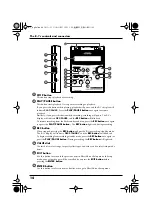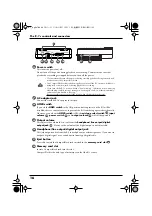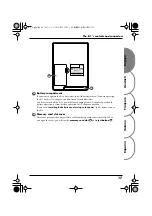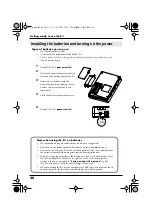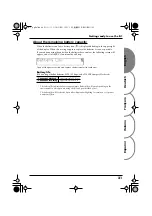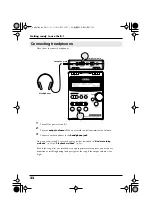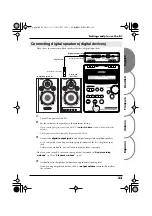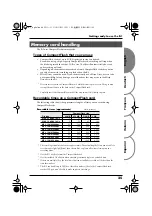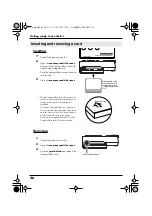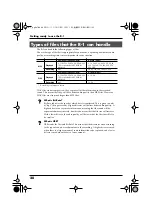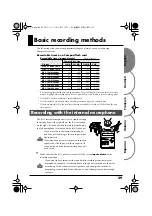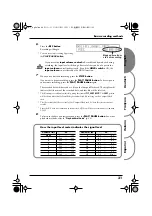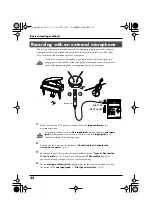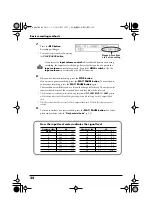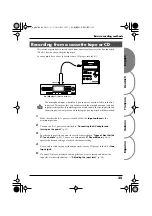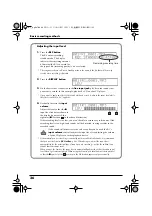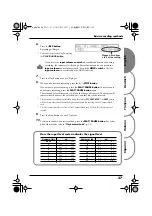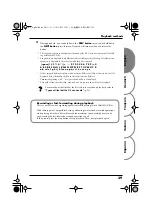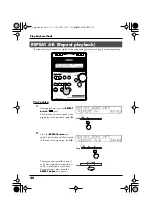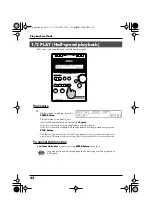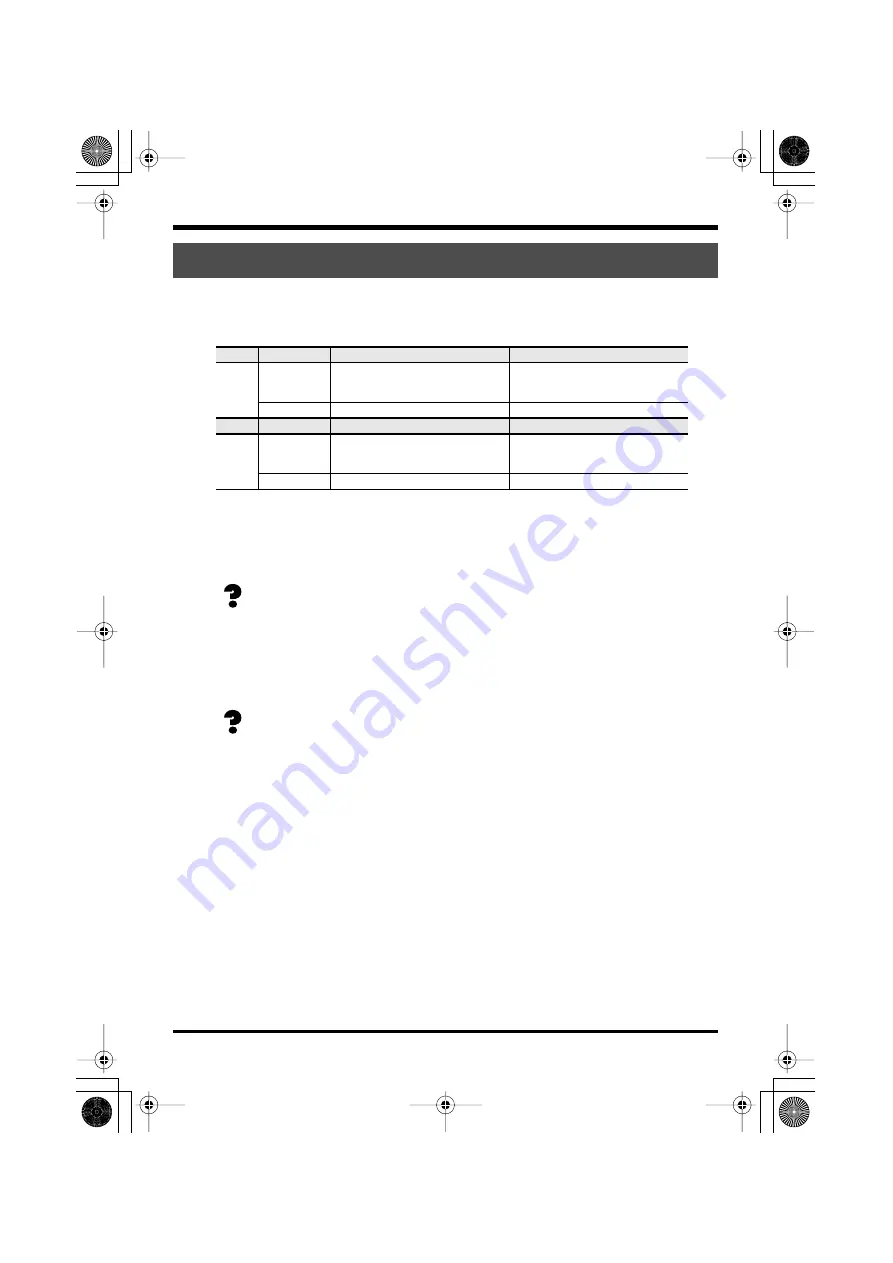
28
Getting ready to use the R-1
The R-1 can handle the following types of files.
Choose the type of file that is appropriate for your needs, depending on whether audio
quality or recording time is more important for your situation.
* Recording is always in stereo.
WAV files are not compressed; they capture all of the information in the recorded
sound. This means that they will have better audio quality than MP3 files. However,
WAV files are also much larger than MP3 files.
What is Bit Rate?
Bit Rate indicates the speed at which data is transferred. This is given in units
of “bps” (bits per second). Higher bit rates will deliver better audio quality. A
higher bit rate conveys more information, meaning that the sound will be
represented more accurately; but this also means that the file size will increase.
With a lower bit rate, the audio quality will be lower but the file size will also
be smaller.
What is VBR?
VBR stands for Variable Bit Rate. This means that the bit rate is varied according
to the type of sound at each moment in the recording. A higher bit rate is used
when there is a larger amount of sonic information to be captured, and a lower
bit rate is used when there is a lesser amount.
Types of files that the R-1 can handle
Sampling frequency (kHz)
Bit rate (kbps)
MP3
Playback
8, 11.025, 16, 22.050, 24, 32, 44.1, 48
* All converted to 44.1 kHz for
playback
8, 16, 24, 32, 40, 48, 56, 64, 80, 96,
112, 128, 144, 160, 192, 224, 256,
320, VBR
Recording
44.1
64, 96, 128, 160, 192, 256, 320
Sampling frequency (kHz)
bit depth (bits)
WAV
Playback
8, 11.025, 16, 22.050, 24, 32, 44.1, 48
* All converted to 44.1 kHz for
playback
8, 16, 24
Recording
44.1
16, 24
R-1_egfis1.book 28 ページ 2005年11月11日 金曜日 午後5時13分

